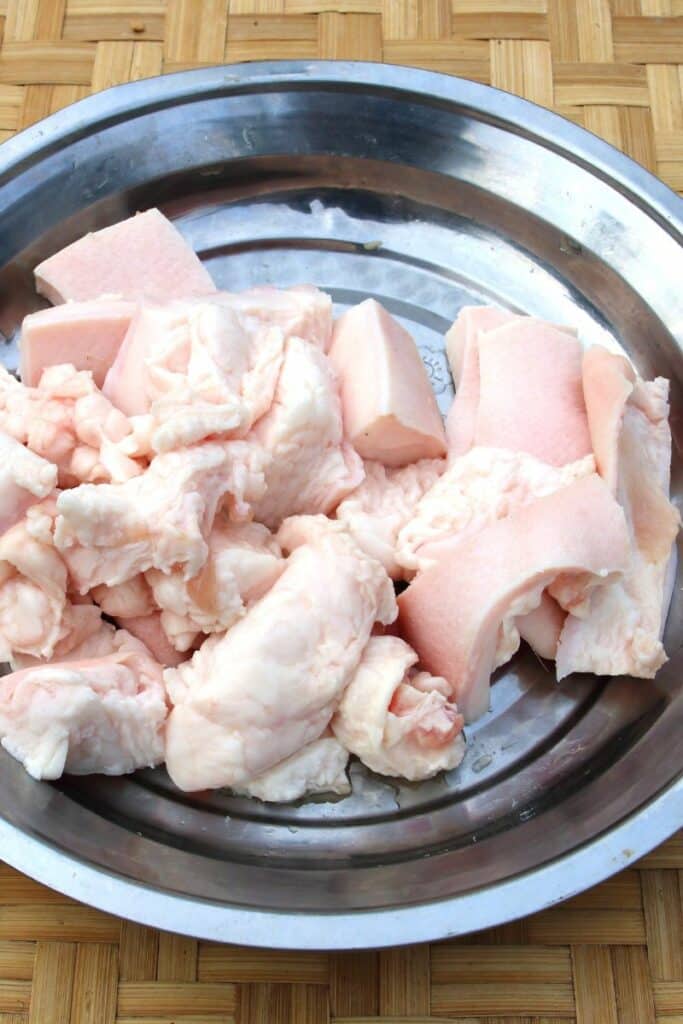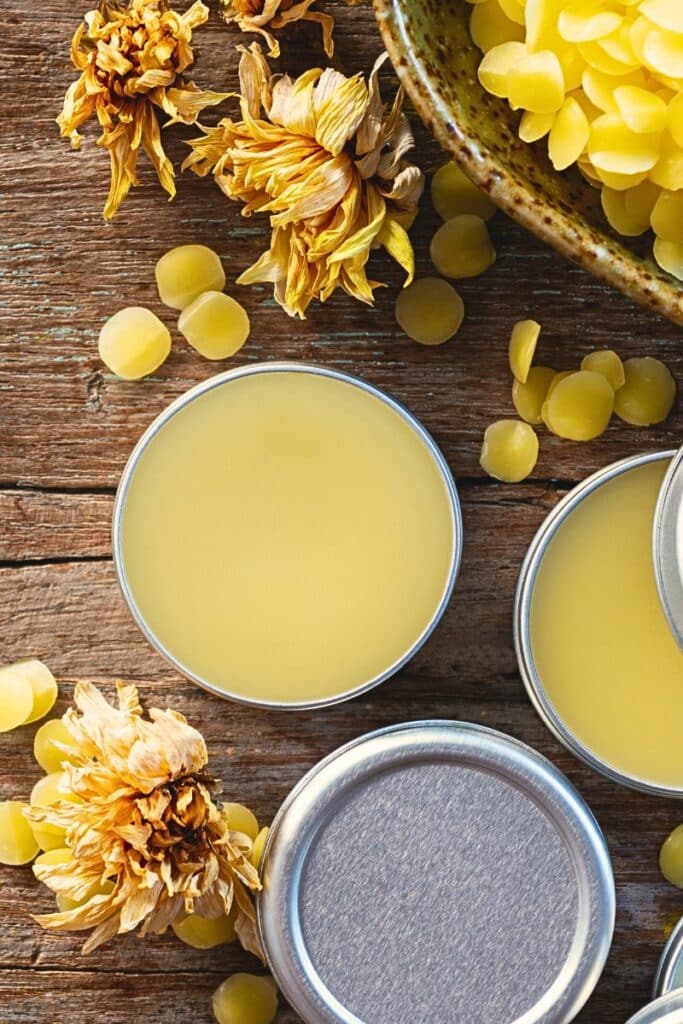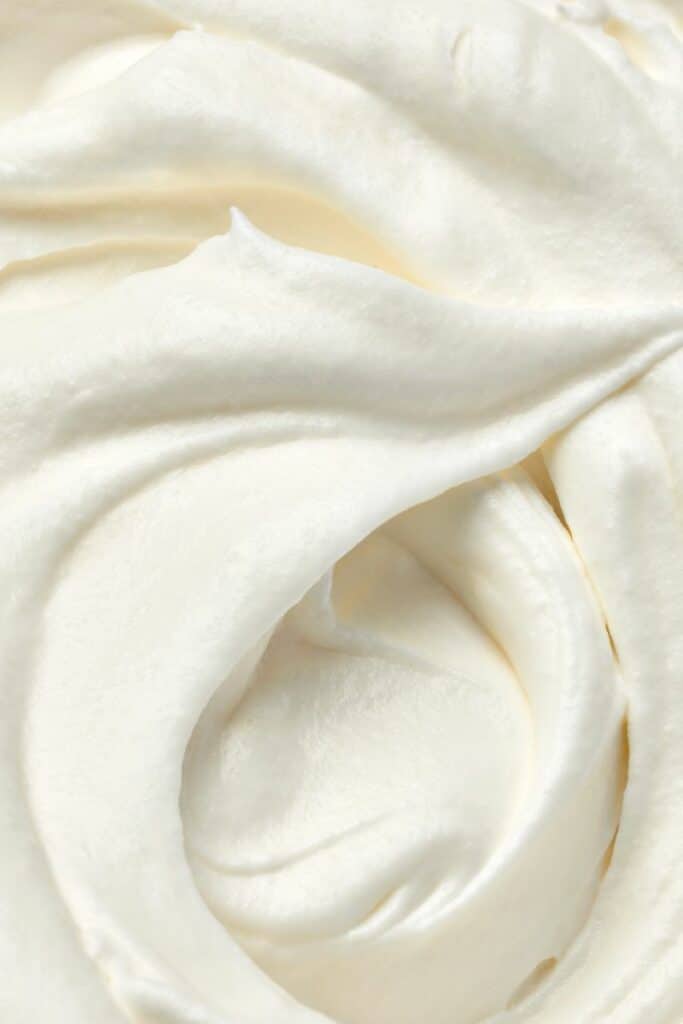Beef Suet vs. Tallow: The Difference Between Them
Beef Suet vs. Tallow might seem like a confusing topic, but understanding the difference can help you make the best choice for your cooking, baking, or even skincare needs. Both are natural animal fats derived from beef, but they are used in very different ways.

Disclaimer: This is not medical advice. Information and statements shown here are for educational and informational purposes only and are not to replace the advice of your healthcare professional.
This post may include affiliate links. Please refer to our disclaimer for full disclosure.
Beef suet and tallow both come from the fat of cattle, but they are not the same thing. Beef suet is the raw, hard fat found around the loins and kidneys of a cow. It’s solid at room temperature and has a high melting point, making it a great choice for cooking and baking, like in traditional pastry doughs and 18th-century recipes.
Tallow, on the other hand, is made by rendering suet, which means melting it down and removing impurities. The result is a clean, pure fat with a long shelf life that stays solid at room temperature.
Knowing the difference between suet and tallow is important because each has unique properties and uses. Suet is ideal for specific culinary applications, while tallow, with its higher smoke point and versatility, works well for cooking at high temperatures, deep frying, making tallow candles, and even skincare.
Whether you’re using tallow as a healthier alternative to vegetable oils or exploring the benefits of suet in traditional recipes, understanding how these natural fats differ can help you make more informed decisions.
What Is Beef Suet?
Beef suet is a type of raw, hard fat that comes from the area around the loins and kidneys of a cow. This animal fat is solid at room temperature and has a high melting point, making it ideal for specific cooking and baking tasks. Suet contains essential fatty acids like linoleic acid and stearic acid, which give it unique properties compared to other fats.
In the kitchen, beef suet is commonly used in traditional recipes like puddings, pastry doughs, and old-fashioned baked goods. Its solid state and slightly beefy flavor make it a great choice for recipes that need rich texture and stability. Suet is also the raw ingredient used to create rendered tallow, a pure fat with a long shelf life and versatile culinary uses.
For those interested in traditional cooking, making your own tallow, or even crafting tallow candles, beef suet is an excellent starting point. It’s often available at grocery stores or butcher shops, especially if you’re looking for high-quality organic grass-fed suet.

What Is Tallow?
Tallow is the result of rendering beef suet, which means melting the raw fat to remove impurities and moisture. This process involves heating suet over low heat until it liquefies, straining it to separate out any solids, and then cooling it to form a clean, stable fat. The result is a pure fat that is solid at room temperature and has a long shelf life.
Tallow is highly versatile and more purified than raw suet, making it suitable for a wide range of uses. It has a high smoke point, which makes it excellent for cooking at high temperatures, such as deep frying or roasting. Beyond the kitchen, tallow is used for making soap, candles, and even as a natural skincare ingredient due to its fat-soluble vitamins and moisturizing properties.
Whether you’re looking for a healthier alternative to vegetable oils, a traditional fat for cooking, or a natural ingredient for DIY projects, tallow plays an important role in both culinary and non-culinary applications.
Key Differences Between Beef Suet Vs. Tallow
Understanding the differences between suet and tallow can help you make better choices depending on your needs. While they both come from the same animal source, they differ in how they’re processed, their consistency, and their uses.
Processing
Suet is raw fat taken from the loins and kidneys of cattle, known as kidney fat. It is unprocessed and still contains moisture and connective tissues. Tallow, on the other hand, is rendered suet. Rendering involves melting the suet over low heat to remove impurities and moisture, resulting in a cleaner, more stable pure fat.
Consistency
Suet is solid at room temperature but has a crumbly texture and can spoil if not stored properly. Tallow, after rendering, becomes a smooth, stable fat that is also solid at room temperature but has a long shelf life and doesn’t require refrigeration.
Uses
Suet is primarily used in culinary applications, like baking pastry dough or making traditional puddings. Tallow, with its high smoke point, is ideal for cooking at high temperatures, like roasting or deep frying. Tallow also has non-culinary uses, such as making tallow candles, soap, and even as a natural moisturizer rich in fat-soluble vitamins.
Whether you’re looking for a traditional cooking fat or a multi-purpose ingredient, knowing these differences helps you make an informed decision the next time you’re in the kitchen or exploring DIY projects.
Beef Suet vs. Tallow for Cooking
Use beef suet for baking or adding flavor to recipes that require raw fat. Its crumbly texture and rich flavor make it ideal for traditional dishes. Suet is commonly used in:
- Suet dumplings: Adds texture and flavor to soups and stews.
- Old-fashioned meat pies: Creates flaky, tender crusts.
- Steamed puddings: Provides the dense, moist consistency required in classic desserts like Christmas pudding.
- Savory fillings: Enhances richness in hearty, slow-cooked meals.
Tallow, on the other hand, is better suited for modern cooking applications that require a stable fat at high temperatures. Its high smoke point makes it an excellent option for:
- Deep frying: Perfect for crispy french fries or fried chicken.
- Roasting: Adds flavor and moisture to vegetables and meats.
- Sautéing: A stable and flavorful alternative to vegetable oils.
- Homemade cooking oils: Use as a healthier, shelf-stable option over processed oils.
In summary:
- Choose beef suet for traditional baking and recipes requiring raw fat.
- Choose tallow for high-heat cooking and versatile modern applications.
Both are valuable, natural fats that bring unique benefits to the kitchen, so the choice ultimately depends on your cooking needs.

Beef Suet vs. Tallow for Skincare
When it comes to skincare, tallow is the better choice over suet. Tallow is a rendered fat that has been purified, making it clean and safe to use on your skin. It is rich in fat-soluble vitamins like A, D, E, and K, which are essential for healthy, moisturized skin. The high levels of stearic acid and palmitic acid in tallow help to nourish and protect the skin, creating a natural barrier that locks in moisture.
Grass-fed tallow is especially beneficial because it contains higher levels of nutrients compared to regular fat from grain-fed cattle. This makes it an excellent choice for natural skincare products like creams, balms, and soaps. Its solid fat texture is easy to work with and blends well with oils like olive oil or jojoba oil in DIY recipes.
Suet, on the other hand, is a raw fat that contains moisture and impurities, making it unsuitable for direct use on the skin. While suet can be used to make tallow through the rendering process, it is not ideal for skincare in its raw state.
If you are looking for a natural source for skincare that is free of chemicals and gentle on sensitive skin, high-quality beef tallow from grass-fed cattle is a great option. Try this one from Planted Herbals, infused with whole herbs to nourish and protect your skin!
How to Render Suet Into Tallow
Rendering suet into tallow is a simple process that transforms raw fat into a clean, versatile fat perfect for cooking or making skincare products. Here’s an easy step-by-step guide to do it at home:
- Chop the suet
Start by chopping organic grass-fed beef suet into small pieces. Smaller pieces melt faster and more evenly during the rendering process. If you can, ask your butcher to help prepare the suet for you. - Melt the suet
Place the chopped suet in a slow cooker, large pot, or heavy-bottomed pan. Heat it on low to medium heat, stirring occasionally to prevent burning. As the fat melts, it will separate from any connective tissue or impurities. - Strain the liquid fat
Once the fat has fully melted, carefully strain it through a cheesecloth or fine mesh strainer into a clean jar or container. This step removes bits of connective tissue or solids, leaving behind smooth, pure fat. - Check for impurities
Let the strained tallow cool to room temperature. If it still has impurities or smells strongly of beef, you may need to repeat the melting and straining process to refine it further. This extra step ensures you end up with clean, high-quality tallow. - Cool and solidify
Allow the strained tallow to solidify completely. It will turn into a creamy, white fat that is shelf-stable and ready to use.
Rendered tallow is a good source of nutritional benefits like palmitic acid and monounsaturated fats. Its high smoke point makes it excellent for cooking at high temperatures, like frying or roasting. You can also use it for soap making or as a base for natural skincare products. Taking the time to refine your tallow ensures a cleaner, more versatile fat for all your needs.

Conclusion
Beef suet and tallow may come from the same animal source, but they serve very different purposes. Suet is raw fat taken from the loins and kidneys of cattle, while tallow is rendered suet that has been purified into a smooth, solid fat. Suet is perfect for traditional recipes like pastry dough and puddings, while tallow, with its high smoke point and long shelf life, is an excellent choice for cooking at high temperatures, soap making, and skincare products.
Both fats are rich in nutritional benefits, including monounsaturated fats and essential fatty acids, and are great options for those seeking natural fats over other oils or even skincare.
Whether you’re exploring traditional cooking, deep frying, making tallow candles, or creating your own skincare, both suet and tallow have unique roles and plenty of uses. Experiment with them to add a touch of history, practicality, and health benefits to your kitchen and DIY projects!



